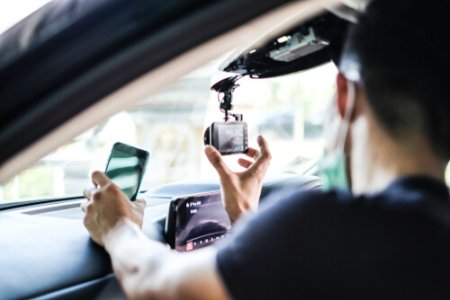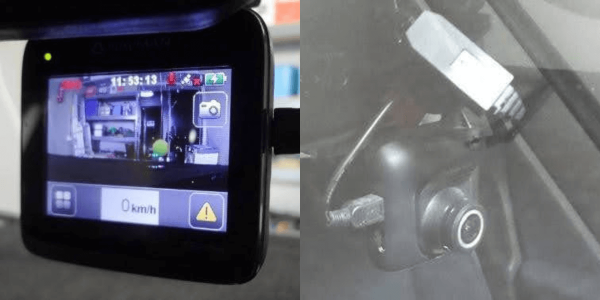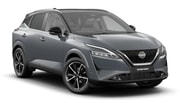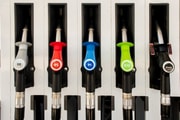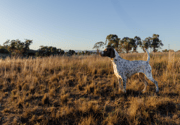Tech Talk with Dr Al: Dashcams – ‘Smile – You’re on Camera!’
- Replies 10
Note from the Editor:
This article was kindly written for the SDC by member Alan G, ‘The Tech Guy’.
What is a dashcam, and why do you need one?
A ‘dashcam’, or dashboard camera, is a camera mounted on your windscreen or dashboard, allowing you to keep a record of your journey on our crowded roads. It has the ability to record onto an integral SD card for half an hour or more of your trip or onto your ‘cloud storage’ via your linked smartphone. It takes its power from the car’s 12-volt system. At the occurrence of some ‘event’ – crash, road rage, suspect driving by another motorist, etc. simply tap the dashcam, and it will retain a video of the incident for later viewing by the police or insurance company.
There are many examples on YouTube of a dashcam recording being used to point the finger at an untruthful participant.
If you’ve ever had a P-Plater tailgating you, a car has cut in front of you, or you’ve witnessed an accident while driving, the evidence on your dashcam may prove invaluable.
What type of dashcam do I need?
The most common type is the forward-facing camera, although getting more economically viable are the dashcams that face to the rear as well. This is quite a good idea to record a rear-end accident or an annoying ‘tailgater’.
What features should I look for?
Dashcams are made with an often-confusing number of features that generally affect the price paid for the device.
Night Vision Recording (optimised day/night recording): I have put this at the top of the list because it appears to be an essential feature.
At least 140 degrees viewing angle: The wider the viewing angle, the more likely it is that you will capture the details of cars that may ‘side-swipe’ you. Some dashcams have a viewing angle of 180 degrees.
3 Axis G-Sensor: If your car receives a sudden shock, as in a forward accident, rear-end collision or side impact, this feature will trigger the dashcam to retain the film footage of the event for later viewing. (Normally, the video is overwritten as the internal SD card fills to capacity – my dashcam keeps about 30 minutes of video on a 32GB SD card.)
Full HD 1080P or UHD 4K video quality: There is little point in using a dashcam that isn’t able to record the number plate of another car ahead or even behind you. Dashcams have considerably improved their resolution over the last few years, and ‘Full HD’ is reckoned to be the bare minimum resolution you should choose.
Crystal-Clear Audio: This is quite a useful feature – it means your comments at the time of the accident or event can easily be recalled, as well as other people’s comments during ‘road rage’!
GPS Receiver: This feature allows you to see exactly where you were on a map when the event occurred. It also means you have an accurate time for the event – a very useful feature.
Dual Channel Front and Rear Views: I regret not having this feature included on my dashcam. In the event of a ‘rear-end’ collision, you really need the details of the careless person for your insurance company and the police.
Parking Mode: This is another very useful feature. Unless the dashcam has a built-in battery, it may not be possible for it to record an event that could occur while your car is unattended. Power for the dashcam is generally via a cable that plugs into the cigarette lighter or accessory socket near the dashboard, and in many cars, this power is cut when the car is parked. The built-in battery included in many dashcams has only a limited recording time.
Easy Installation: Most dashcams have a suction cup attachment to the windscreen. So that the dashcam does not impede your forward view, it is logical to place this suction cup as high as possible behind the rear-view mirror for the camera to receive the best forward view. Unfortunately, some cars (like mine) have a ‘virtual sun-visor’ that consists of black raised ‘dots’ across the top of the windscreen, making it impossible for a suction cup to stick. I have been able to overcome this, however, by buying a bracket that attaches to the rear-view mirror support that holds the dashcam.
Cloud Storage: There are now a number of dashcams that include ‘Cloud Storage’. They either record directly to ‘the Cloud’ or back up to the Cloud from their own internal storage. What it means is that you will be able to access the video footage remotely using your smartphone or computer, even if the dashcam or car is stolen. The price for this feature isn’t excessive; for instance, the Nexar Pro GPS Dashcam is about $215 (but it costs a little more for greater than 32GB internal storage). Blackview and Thinkware also sell cameras that employ Cloud storage, but they are a lot more expensive. You need to have stable internet access so you can use the Cloud. You can connect via your local Wi-Fi (When in range), Built-in LTE (in select models), a vehicle internet hotspot connection, or directly through a mobile hotspot on your phone.
On a personal note, I ‘lost’ our car in the airport car park when we returned from holiday, and we spent over half an hour trying to find it since I (stupidly) hadn’t noted where we left it. The Nexar camera specifies exactly this scenario as an advantage of using their dashcam.
Insurance:
Regarding insurance premium reductions, in a similar way that light-coloured cars don’t attract a discount (although I believe they should), an Insurance Council of Australia spokesperson told Canstar that insurers use several factors to determine car insurance premiums, but having a dashcam is generally not one of them. He also said, ‘Most Australian insurers don’t currently offer insurance premium reductions for the installation or use of dashcams, and most insurers will not factor in the use of a dashcam in pricing a policy because it does not actually reduce the risk of something unexpected happening that could lead to a claim.’ It should be noted that there are quite a few countries in Europe that don’t allow dashcams at all!
My recommendations:
I suppose this really depends upon the ‘depth of your pocket’. I’m always on the lookout for a bargain, so I tend to make a decision based on price – probably not such a fantastic idea for buying a dashcam, the use of which could save you thousands of dollars, literally.
My dashcam is a Navman MiVue 560, and I got it in the last days before Dick Smith stores closed at a special price of less than $150. It has most of the features I already mentioned but does not have another camera facing towards the rear of the car. I avoided using cables that could be hidden under front window trim, etc., by tapping off the 12v supply to my auto-dimming mirror and a 12v to 5v converter. It uses a 32GB SD card, and as mentioned, I believe it has about a 30-minute recording time – recordings that are not ‘reserved’ by an ‘event’ are over-written. It is quite small but records in High Definition with an automatic day/night mode.
There is plenty of advice online concerning what is ‘the best’ dashcam, but avoid the ‘sponsored’ websites. Use an unbiased site like ‘techradar.com’. You can also look at Canstar-Blue, Techbest and Tom’s Guide, but there are many other non-sponsored sites.
Choose a known make, like Garmin (expensive) or Navman.
In your deliberations, remember how much money they are potentially saving you in the event of an accident. It is about five years since I bought our dashcam, and I now know that I can use my knowledge of more modern technology employed in current cameras, such as Cloud storage and front and rear cameras, to replace ours.
Good luck!
About the author: Having spent three years living in Australia in his youth, Alan returned to Australia in 1969 with his wife and young child. Holding a Bachelor of Engineering degree and a Doctor of Science Education degree, Alan has experience in flight simulations, Einsteinian physics, and inventing an ‘eye blink’ device that allows cerebral palsy patients to communicate. He even took a turn at acting, starring in a TV advert and landing supporting and lead roles in his local dramatic society plays. His short stories have been published in WA’s The Gingin Buzz for ten years, and his novel The Magic Hourglass is a work in progress. He and his wife have a lovely life in Brisbane and regularly visit their two children in Sydney’s West. You can read Alan’s full-length bio here.
From the Editor:
When I invested in my first 'higher-quality' car, I immediately invested in a dashcam. It was great for peace of mind and certainly would have been useful earlier in my life when I was rear-ended by someone less than honest. But, just one note: the audio recording will capture you singing along to your radio. Definitely not speaking from personal experience...
We were only able to create this content because of the financial support of SDC Rewards members. If you'd like to see more of this (and a lot fewer ads!), please consider supporting us and signing up for SDC Rewards today—it starts at just $5.99 per month.
This article was kindly written for the SDC by member Alan G, ‘The Tech Guy’.
What is a dashcam, and why do you need one?
A ‘dashcam’, or dashboard camera, is a camera mounted on your windscreen or dashboard, allowing you to keep a record of your journey on our crowded roads. It has the ability to record onto an integral SD card for half an hour or more of your trip or onto your ‘cloud storage’ via your linked smartphone. It takes its power from the car’s 12-volt system. At the occurrence of some ‘event’ – crash, road rage, suspect driving by another motorist, etc. simply tap the dashcam, and it will retain a video of the incident for later viewing by the police or insurance company.
There are many examples on YouTube of a dashcam recording being used to point the finger at an untruthful participant.
If you’ve ever had a P-Plater tailgating you, a car has cut in front of you, or you’ve witnessed an accident while driving, the evidence on your dashcam may prove invaluable.
What type of dashcam do I need?
The most common type is the forward-facing camera, although getting more economically viable are the dashcams that face to the rear as well. This is quite a good idea to record a rear-end accident or an annoying ‘tailgater’.
What features should I look for?
Dashcams are made with an often-confusing number of features that generally affect the price paid for the device.
Night Vision Recording (optimised day/night recording): I have put this at the top of the list because it appears to be an essential feature.
At least 140 degrees viewing angle: The wider the viewing angle, the more likely it is that you will capture the details of cars that may ‘side-swipe’ you. Some dashcams have a viewing angle of 180 degrees.
3 Axis G-Sensor: If your car receives a sudden shock, as in a forward accident, rear-end collision or side impact, this feature will trigger the dashcam to retain the film footage of the event for later viewing. (Normally, the video is overwritten as the internal SD card fills to capacity – my dashcam keeps about 30 minutes of video on a 32GB SD card.)
Full HD 1080P or UHD 4K video quality: There is little point in using a dashcam that isn’t able to record the number plate of another car ahead or even behind you. Dashcams have considerably improved their resolution over the last few years, and ‘Full HD’ is reckoned to be the bare minimum resolution you should choose.
Crystal-Clear Audio: This is quite a useful feature – it means your comments at the time of the accident or event can easily be recalled, as well as other people’s comments during ‘road rage’!
GPS Receiver: This feature allows you to see exactly where you were on a map when the event occurred. It also means you have an accurate time for the event – a very useful feature.
Dual Channel Front and Rear Views: I regret not having this feature included on my dashcam. In the event of a ‘rear-end’ collision, you really need the details of the careless person for your insurance company and the police.
Parking Mode: This is another very useful feature. Unless the dashcam has a built-in battery, it may not be possible for it to record an event that could occur while your car is unattended. Power for the dashcam is generally via a cable that plugs into the cigarette lighter or accessory socket near the dashboard, and in many cars, this power is cut when the car is parked. The built-in battery included in many dashcams has only a limited recording time.
Easy Installation: Most dashcams have a suction cup attachment to the windscreen. So that the dashcam does not impede your forward view, it is logical to place this suction cup as high as possible behind the rear-view mirror for the camera to receive the best forward view. Unfortunately, some cars (like mine) have a ‘virtual sun-visor’ that consists of black raised ‘dots’ across the top of the windscreen, making it impossible for a suction cup to stick. I have been able to overcome this, however, by buying a bracket that attaches to the rear-view mirror support that holds the dashcam.
Cloud Storage: There are now a number of dashcams that include ‘Cloud Storage’. They either record directly to ‘the Cloud’ or back up to the Cloud from their own internal storage. What it means is that you will be able to access the video footage remotely using your smartphone or computer, even if the dashcam or car is stolen. The price for this feature isn’t excessive; for instance, the Nexar Pro GPS Dashcam is about $215 (but it costs a little more for greater than 32GB internal storage). Blackview and Thinkware also sell cameras that employ Cloud storage, but they are a lot more expensive. You need to have stable internet access so you can use the Cloud. You can connect via your local Wi-Fi (When in range), Built-in LTE (in select models), a vehicle internet hotspot connection, or directly through a mobile hotspot on your phone.
On a personal note, I ‘lost’ our car in the airport car park when we returned from holiday, and we spent over half an hour trying to find it since I (stupidly) hadn’t noted where we left it. The Nexar camera specifies exactly this scenario as an advantage of using their dashcam.
Insurance:
Regarding insurance premium reductions, in a similar way that light-coloured cars don’t attract a discount (although I believe they should), an Insurance Council of Australia spokesperson told Canstar that insurers use several factors to determine car insurance premiums, but having a dashcam is generally not one of them. He also said, ‘Most Australian insurers don’t currently offer insurance premium reductions for the installation or use of dashcams, and most insurers will not factor in the use of a dashcam in pricing a policy because it does not actually reduce the risk of something unexpected happening that could lead to a claim.’ It should be noted that there are quite a few countries in Europe that don’t allow dashcams at all!
My recommendations:
I suppose this really depends upon the ‘depth of your pocket’. I’m always on the lookout for a bargain, so I tend to make a decision based on price – probably not such a fantastic idea for buying a dashcam, the use of which could save you thousands of dollars, literally.
My dashcam is a Navman MiVue 560, and I got it in the last days before Dick Smith stores closed at a special price of less than $150. It has most of the features I already mentioned but does not have another camera facing towards the rear of the car. I avoided using cables that could be hidden under front window trim, etc., by tapping off the 12v supply to my auto-dimming mirror and a 12v to 5v converter. It uses a 32GB SD card, and as mentioned, I believe it has about a 30-minute recording time – recordings that are not ‘reserved’ by an ‘event’ are over-written. It is quite small but records in High Definition with an automatic day/night mode.
There is plenty of advice online concerning what is ‘the best’ dashcam, but avoid the ‘sponsored’ websites. Use an unbiased site like ‘techradar.com’. You can also look at Canstar-Blue, Techbest and Tom’s Guide, but there are many other non-sponsored sites.
Choose a known make, like Garmin (expensive) or Navman.
In your deliberations, remember how much money they are potentially saving you in the event of an accident. It is about five years since I bought our dashcam, and I now know that I can use my knowledge of more modern technology employed in current cameras, such as Cloud storage and front and rear cameras, to replace ours.
Good luck!
About the author: Having spent three years living in Australia in his youth, Alan returned to Australia in 1969 with his wife and young child. Holding a Bachelor of Engineering degree and a Doctor of Science Education degree, Alan has experience in flight simulations, Einsteinian physics, and inventing an ‘eye blink’ device that allows cerebral palsy patients to communicate. He even took a turn at acting, starring in a TV advert and landing supporting and lead roles in his local dramatic society plays. His short stories have been published in WA’s The Gingin Buzz for ten years, and his novel The Magic Hourglass is a work in progress. He and his wife have a lovely life in Brisbane and regularly visit their two children in Sydney’s West. You can read Alan’s full-length bio here.
From the Editor:
When I invested in my first 'higher-quality' car, I immediately invested in a dashcam. It was great for peace of mind and certainly would have been useful earlier in my life when I was rear-ended by someone less than honest. But, just one note: the audio recording will capture you singing along to your radio. Definitely not speaking from personal experience...
We were only able to create this content because of the financial support of SDC Rewards members. If you'd like to see more of this (and a lot fewer ads!), please consider supporting us and signing up for SDC Rewards today—it starts at just $5.99 per month.
Last edited:

